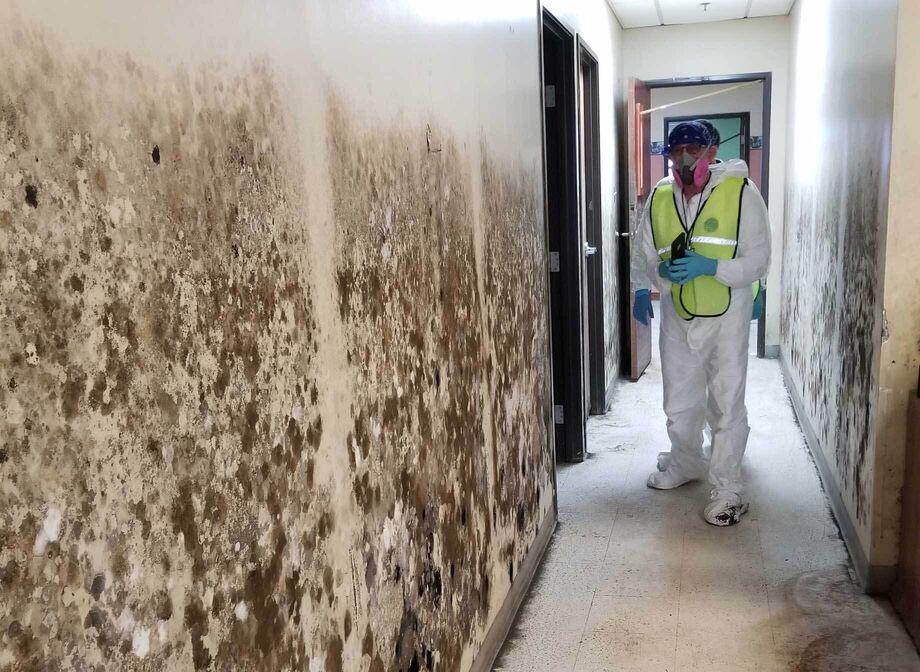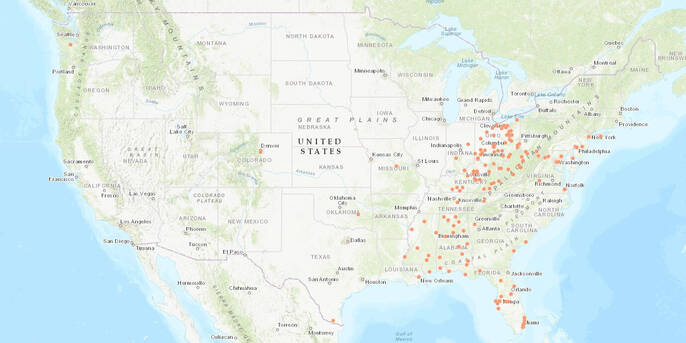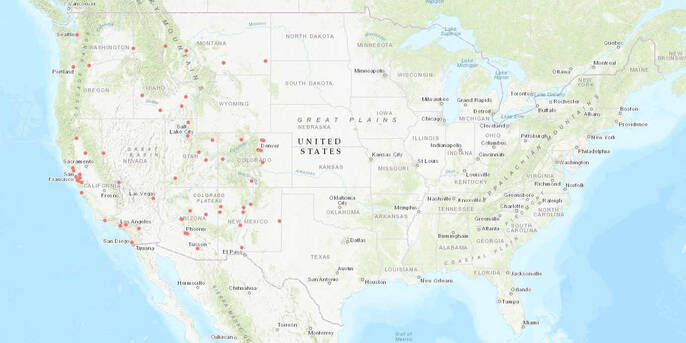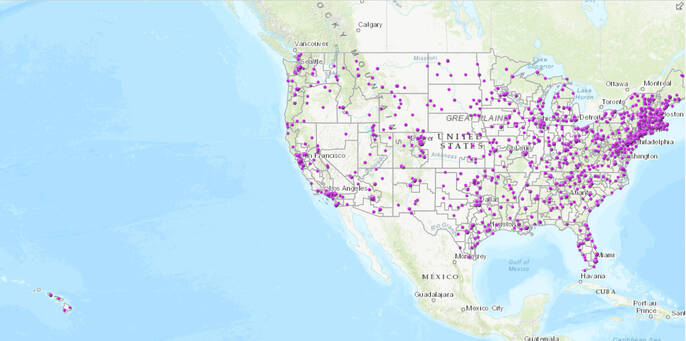
National Heritage Responder Robert Herskovitz visits a mold-infested institution in Puerto Rico following Hurricane Maria in 2017. Image courtesy of FAIC.
Our cultural heritage lives in many forms, from presidential letters and great works of art to community archives and endangered languages. It is also vulnerable and requires protection from natural and man-made disasters as well as simple decay over time. Since the National Endowment for the Humanities was established, the agency has worked to ensure that our cultural heritage is both accessible now and preserved for future generations.
Protecting cultural heritage
A 2004 survey, commissioned by the Institute for Museum and Library Services, found that only 20% of collecting institutions in the United States had an emergency/disaster plan for their collections, and over 90% lacked a written long-term preservation plan. Thanks to efforts by the NEH and other agencies to prioritize the education and training of cultural institution staff in preservation care and emergency planning, a follow-up survey in 2014 found some improvement: 42% of institutions reported having an emergency plan, and 27% a written preservation plan.
The NEH continues to support education and training for staff of small to mid-sized institutions through its preservation education programs. Funding to nationally-recognized preservation centers like the Northeast Document Conservation Center and the Midwest Art Conservation Center helps these institutions offer low- and no-cost support to organizations throughout the United States.
Preserving local heritage
The NEH’s preservation assistance grants for small- and mid-sized institutions (PAG) program helps organizations across the country preserve their collections. These grants have a particular impact in areas of the country like Appalachia and the Gulf South, where a great deal of our cultural heritage is held by small organizations without in-house preservation staff. PAG grants can dramatically increase organizations’ capacity to safeguard their collections by providing funds for a number of preservation purposes, from hiring consultants to develop preservation plans to upgrading HVAC systems.
Emergency response
The NEH also supports professional networks in areas prone to disaster, establishing the infrastructure necessary for effective disaster response. With the Foundation of the American Institute for Conservation (FAIC), the NEH supports the Alliance for Response: 32 community networks, from Seattle to the Mississippi Gulf Coast, that build cooperative partnerships and ensure that vulnerable regions are prepared for disasters before they happen.
of collecting institutions lacked a formal preservation plan, according to a 2014 survey.
of 216 languages spoken in the US are endangered
Documenting endangered languages
Of the 216 languages spoken in the United States, 143 are considered endangered. Through its Documenting Endangered Languages program, a partnership with the National Science Foundation, the NEH has granted $7 million to study and preserve threatened Indigenous American languages. These multi-year grants support tribes and their partners in creating the linguistic resources necessary to bring a language back from the brink. DEL grants have helped produce dictionaries for languages like Klallam and Arapaho; they have also provided the funds for these resources to be online and freely available to tribal members. The NEH additionally supports the documentation and revitalization of Indigenous American languages through its regular grant programs.
Making American heritage accessible
In addition to helping preserve our cultural heritage, the NEH has supported efforts to make that heritage more accessible to a wider audience. Periodic support to the Massachusetts Historical Society provided the funds to prepare and publish The Papers of John Adams and The Adams Family’s Correspondence, which are available for free online, and the University of Nebraska has used NEH funding in part to digitize major cultural resources and make them freely available to the public. Finally, NEH grants have helped smaller organizations broaden their communities’ access to their own heritage: digitizing its collection of historical photographs allowed the Museum of the Aleutians to engage an audience beyond its remote region, while grant funding helped the Stillwater Public Library make their special collections available to the public and, as a result, build stronger ties with the community.



